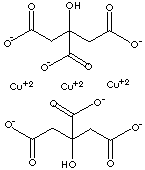|
Several lines of evidence have recently suggested that the essential trace metal
copper may play a key role in the neuropathologyof neurodegenerative disorders
such as prion disease and Alzheimer's disease. The purpose of this review is to
evaluate recently published work that implicates copper in neurodegenerative
disorders. Several physiological functions of PrPc have been proposed. Cellular
prion protein binds Cu2+ through the octapeptide repeat motif located in its
N-terminal region, and this interaction appears to induce PrPc internalization,
suggesting a role of PrPc in copper metabolism. An antioxidant role for PrPc has
also been proposed. In addition, it has been shown that PrPc is susceptible to
copper-catalyzed oxidation in the presence of autoxidizable substances, such as
L-ascorbate and dopamine. There have also been several results suggesting
interactions between PrPSc and copper, and a possible role of this metal in
prion disease. First, copper facilitates the restoration of protease resistance
and infectivity during the refolding of guanidine-denatured PrPSc. Second,
copper binding has been shown to favor the formation of s-sheet structures in
PrPC, and to induce fibrillation and aggregation. However, such copper-induced
changes in the biochemical properties of PrPC are not sufficient for its
conversion into PrPSc. Several recent studies have shown that synthetic A.BETA.
and purified APP undergo physicochemical interactions with Zn(II), Cu(II) and
Fe(III) with low micromolar and submicromolar concentrations of the metal ions.
APP can reduce Cu(II) to Cu(I), which results in oxidation of Cys-144 and
Cys-158 yielding intramolecular disulfide bridge. The resulting APP-Cu(I)
complex is prone to redox reactions that result in site-specific APP
fragmentation
(http://sciencelinks.jp) |
